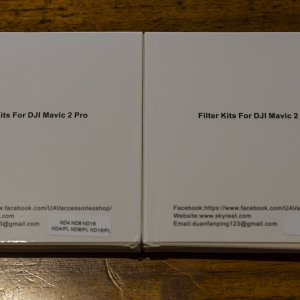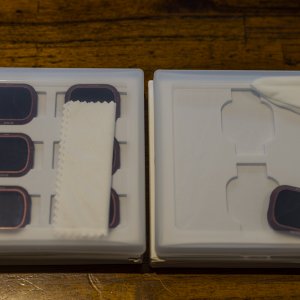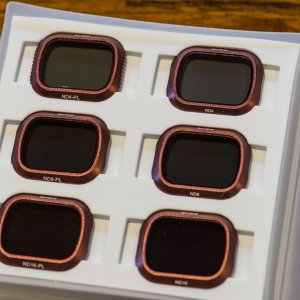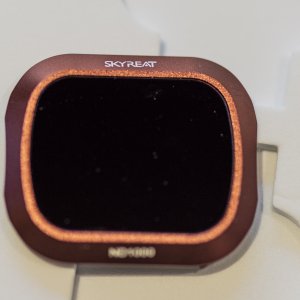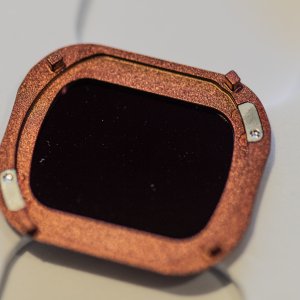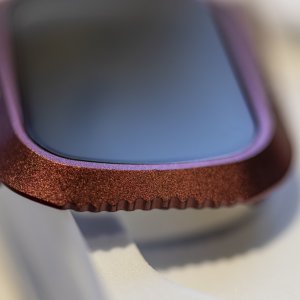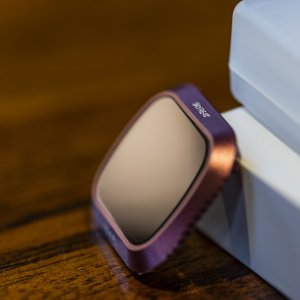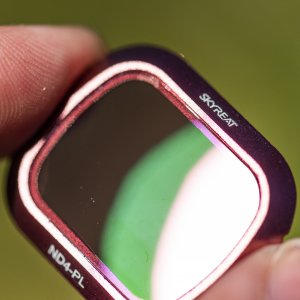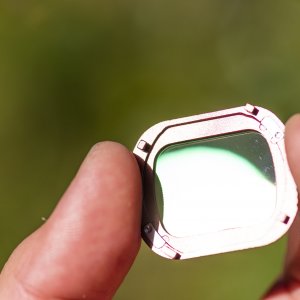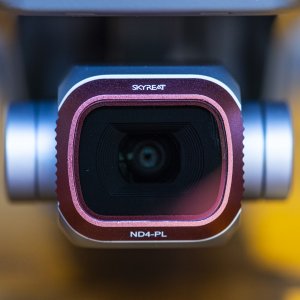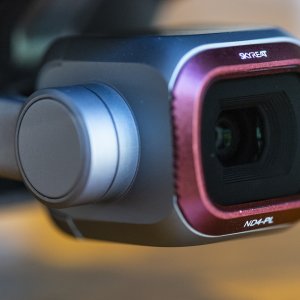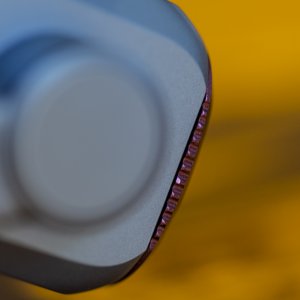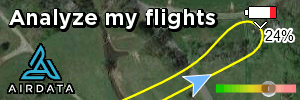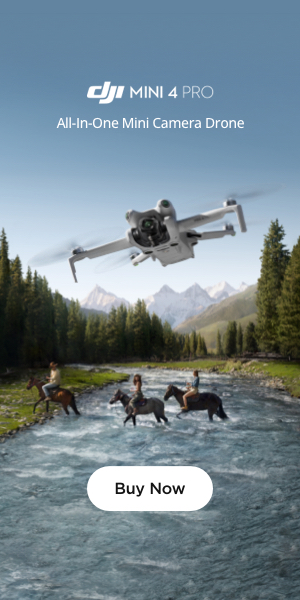Ingraving it with a Hasselblad logo...wont give that clear filter the same extremely high quality optics that a TRUE "Hasselblad" clear lens filter would have.Take the filter kit to the jewelers and get them to engrave "Hasselblad" on the filter bodies.
Some would gleefully argue this is about as much input Hasselblad had with the M2P camera anyway
You are using an out of date browser. It may not display this or other websites correctly.
You should upgrade or use an alternative browser.
You should upgrade or use an alternative browser.
Skyreat Mavic 2 Pro ND and ND-PL Filter Review
- Thread starter eukaryote
- Start date
Trees138
Well-Known Member
I was in the comments section of a YT video where the guy was just going on and on about the Hasselblad camera, like... wagging the logo in front of the camera he was filming the segment with....
I said something to the effect of the Hasselblad logo being on there was really more of a gimmick than anything, and you'd have thought I started insulting people mothers.
I don't get how people don't understand that DJI bought their way into using that name. I'm sure there are some benefits there in some way, but the thing just saying Hasselblad is not that big of a deal, it does not mean a whole lot anymore.
I said something to the effect of the Hasselblad logo being on there was really more of a gimmick than anything, and you'd have thought I started insulting people mothers.
I don't get how people don't understand that DJI bought their way into using that name. I'm sure there are some benefits there in some way, but the thing just saying Hasselblad is not that big of a deal, it does not mean a whole lot anymore.
fstop.labs
Well-Known Member
- Joined
- Oct 21, 2016
- Messages
- 277
- Reactions
- 192
- Age
- 35
The sensor is still from Sony, the Hasselblad is the brand name that people go forI was in the comments section of a YT video where the guy was just going on and on about the Hasselblad camera, like... wagging the logo in front of the camera he was filming the segment with....
I said something to the effect of the Hasselblad logo being on there was really more of a gimmick than anything, and you'd have thought I started insulting people mothers.
I don't get how people don't understand that DJI bought their way into using that name. I'm sure there are some benefits there in some way, but the thing just saying Hasselblad is not that big of a deal, it does not mean a whole lot anymore.
Trees138
Well-Known Member
I don't think Hasselblad... or many camera manufacturers make their own sensors, for what it's worth, some do, even then it's not across the board.
A LOT of cameras use Sony sensors.
Phase One for example.
Hasselblad as another.
The Nikon D850.
Pentax K-5 etc...etc....
A LOT of cameras use Sony sensors.
Phase One for example.
Hasselblad as another.
The Nikon D850.
Pentax K-5 etc...etc....
I was in the comments section of a YT video where the guy was just going on and on about the Hasselblad camera, like... wagging the logo in front of the camera he was filming the segment with....
I said something to the effect of the Hasselblad logo being on there was really more of a gimmick than anything, and you'd have thought I started insulting people mothers.
I don't get how people don't understand that DJI bought their way into using that name. I'm sure there are some benefits there in some way, but the thing just saying Hasselblad is not that big of a deal, it does not mean a whole lot anymore.
People have no idea that Hasselblad was a company in total shambles before DJI bought them. They were a disaster on the verge of bankruptcy. They laid people off, and had Sony completely building several of their models. Their staff was literally bolting on wood grips to Sony cameras and sticking on stylized dials and trying to charge 5 times more than the Sony version. As they were hitting the very bottom, they had to dump all their remaining camera stock and almost give away those cameras.
The company was a total mess, run entirely by investment bankers. They were never a true "electronics" company. They were only a horrifically over priced camera "fashion brand".
Google that companies history in the past 15 years...it's pretty pitiful and sad.
CT
Trees138
Well-Known Member
Yep, it's a pretty far cry from what they once represented. Hell, for all I know they always were a farce.
Back when 2 1/4 x 2 1/4 was the in thing and Kodak and Ilford were the way to go the "Blad" was the camera of choice if you could afford one.Yep, it's a pretty far cry from what they once represented. ****, for all I know they always were a farce.
Trees138
Well-Known Member
vinhidalgo
Well-Known Member
- Joined
- Feb 8, 2017
- Messages
- 144
- Reactions
- 67
- Age
- 47
Introduction and Theory – Why we need neutral density filters, even with the Mavic 2 Pro
The Mavic 2 Pro, with its ‘1 inch’ Sony sourced sensor is a marvel to behold, mainly due to the fact that DJI have managed to fit it into such a compact body. At just over 900g, the Mavic 2 Pro goes head to head with its much bigger and heavier cousin, the Phantom 4 Pro.
Like the Phantom 4 Pro, the Mavic 2 Pro is gifted with a variable aperture of f2.8-f11, allowing for much more creative freedom when controlling shutter speeds for video capture; depth of field much less so, as at the distances the drone is usually flying at, the depth of field will usually cover the entire region of interest.
The aim has always been the same: shutter speed should ideally be 2 x frame rate, to allow for that ‘cinematic feel’ and reduction in choppiness in the video sequence often noticed when shutter rates are much higher than frame speed.
However, it’s becoming more apparent that beyond F5.6 the Mavic2 Pro lens starts to be affected by diffraction, and by f11 this becomes much more prominent, leading to significant loss of resolution. So effectively, we have 2 stops (f2.8 to f4, to f5.6) of ‘neutral density’ filters built into the M2P. This becomes an issue on much sunnier days, when shutter speeds can climb into the 1/1000+ range. Even with aperture at f5.6, we may be faced with a shutter speed of 1/500 or greater. This is where neutral density filters come into play.
Neutral density filters restrict the amount of light that can enter and contact the sensor. Depending on the quality of the ND filter, resolution loss is minimal, but with the much greater benefit of diffraction losses being negligible vs increasing the aperture.
Thus to get 1/500 down to 1/60 for a 30fps, and with every stop of ND filtration offering half light transmittance, we need 3 stops reduction i.e. 1/500 - > 1/250 - > 1/125 -> ~1/60.
ND filters nomenclature reflects the stops of light reduced i.e. ND 4 – ¼ light, ND8 – 1/8 light etc so in the above example we need a ND8 filter.
To throw the spanner in the works, we can add polarisation to the mix as well. This allows for not only reduction of light entry to the sensor, but in a very simplified explanation, filters light waves so that only those coming from a certain direction are allowed entry to the sensor. This means things such as reflections are significantly reduced. Most pertinent example of this is looking through water; on a sunny day, glare would reduce your ability to see into the depths of water. With a polarising filter, this glare is significantly reduced. The other advantage of the polarising filter is it increases contrast because of the filtration of glare.
Product:
Disclosure: I was sent a free sample of filters by Skyreat. However, I was not paid for this review. All comments and opinions in this review are mine alone, with no undue influence by the manufacturer.
Skyreat produce a multitude of accessories for DJI line of drones, and have just released their series of Mavic 2 Pro filters. These range from ND4, 8, 16, 32, 64, 1000 and ND4-pl, ND8-pl, ND16-pl
Today we will be reviewing the ND 4, 8, 16, 4pl, 8pl, 16pl and 1000
Manufacturer specifications:
Skyreat for this product is using Japan Asahi Glass (AGC), optical glass that is right up there with Schott, a brand used by the likes of B+W for DSLR filters.
The glass is coated on both sides with between 18-24 layers applied to each side. This leads to a reflection rate of less than 2.5% in the visible spectrum. In conjunction, there is a waterproofing layer applied to the side of the filter glass facing the environment, increasing the chance of water droplets coalescing and sliding away from the filter when weather is less than average, rather than form a smattering on the glass, and hence reducing diffraction issues as light travels through the droplets. That’s the theory anyway!
Polarisation is via a film, and is linear in nature, rather than circular. We shall see if this throws off the metering system of the Mavic 2 Pro.
Note: It is a relief to see that both sides of the glass are coated, as this reduces internal reflections between the filter and the glass on the sensor. Internal reflections lead to ghosting, significantly reducing the quality of ones images, and something that cannot be removed in post-production editing.
Packaging: Simple plastic case. Pity that the ND1000 wasn't well positioned in the case, but that could be due to transport. However, if it were, i'd have expected the other 6 to be displaced as well, so I am going to be putting this down to poor quality control in the packaging department.
Quality:
The filters are made of a high quality aluminium that has been adonised with red. Each filter has the logo on top, and the type of filter on the bottom. Note that for some reason, the ND4-PL filter has the sides of the filter riveted for better handling, yet this is not present on the other filters. The glass has no scratches, and as seen in the photos, on both sides are multi coated. It was fairly difficult to get the green coating to show up on the photos i.e. the coating is doing its job!
Most of the filters have a snug fit onto the camera body like the stock UV filter, however I did find one of the filters slightly loose. It was still stuck in position, but there was some play, which although does not affect image quality, is just something to note. However, for something this cheap, we are already miles ahead of where we should be.
Side by side the the stock UV filter, they seem like an almost perfect match....
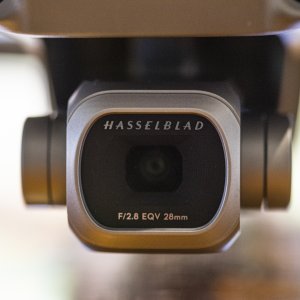
But then notice the side of the ND filter, how it bulges out beyond the camera enclosure
Because of this, it is very difficult to insert the camera/gimbal cover without jiggling the gimbal around, something that can be a little unnerving initially, but it does fit if you are wondering.
Testing
On a sunny day, I decided to shoot a relatively benign background with lots of textures to be able to discern any differences in detail/resolution between the stock UV filter and Skyreat filters.
The camera was put into manual mode, full resolution, with colour temperature set at 5500K and shot in RAW. Images were analysed in Lightroom, with no corrections applied.
In summary:
- The camera is sharp!
- No issues with ND filters re: gimbal calibration
- The filters have a slight green cast to them - all ND filters will have colour cast, but something this subtle will not be of any concern
- Detail preservation is excellent on the Skyreat filters, even the ND1000, with only the slightest of detail degradation on pixel peeping at the monitor for some time. Again, this can be explained by autofocus differences between the images
- ND-PL does not affect auto-focus/exposure done by the M2P
- The polarising filter set is very good, compared to the ND filters alone, contrast is enhanced, reflections decreased while preserving excellent detail
-- However, I would also rather a CPL filter with no ND components for us photographers who value higher shutter speeds
- Note: The focus was a little off on the ND1000 filter, hence the slight detail artifacts. However, compared to the other NDs, the colour cast was the same
Links to original files in JPEG for ease
Dropbox - Skyreat - Simplify your life
Cons:
- I would have really appreciated an ND-PL where the lens was rotatable. On testing, further polarisation could be obtained if it had been rotated.
- One filter that was slightly lax on the camera - however, did not affect the operation of the camera/image quality
- Quality control for the ND1000 box - but this is being nitpicky now
- Gimbal cover difficult to place onto camera and gimbal assembly with filter attached - But i have been advised Skyreat have a fix in the process, and will replace with the revised filter if the customer asks.
Conclusion
This is a great filter set, and for the price, is undeniable value for money. Quality is excellent, using high end components to make what is a very compelling buy for videographers and photographers who need the polarising filter
If they could also release a CPL filter with no ND component, this would be something of great value!
Do you have the contact info from SkyReat? I bought one complete set from Amazon, and yes, you’re right. The Gimbal cover is kind hard to put back but can be accomplished. My set does not have those marks or pins on the sides but still makes a little friction while putting the gimbal cover in place.
Please let me know if they’re planning to get that little issue fixed.
vinhidalgo
Well-Known Member
- Joined
- Feb 8, 2017
- Messages
- 144
- Reactions
- 67
- Age
- 47
I was sent a revised Skyreat 6 filter ND/ND-PL kit to review.
The main differences are now:
1) The gimbal cover will now fit over the gimbal with filter attached without obstruction
2) The ND-PL filter is now rotatable. This allows for variable/adjustable polarisation, which we will get into later
External Box:
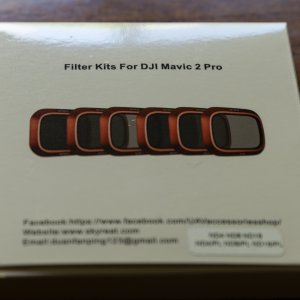
Relatively unchanged. A nice gloss with clear printing. Nothing fancy, but gets the job done
Internal Box:
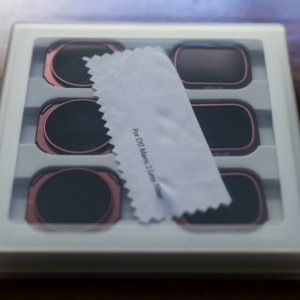
It’s good to note that the QC seems to have been increased, and the filters are now fitted better into the box with the lens wipe.

On the left are the ND filters, and on the right are the ND-PL variable filters. Simple, well presented. The foam ensures that there is a nice secure fit of the filters into box. I prefer this over plastic box inserts which can scratch the filters on insertion and removal.
The ND-PL filters
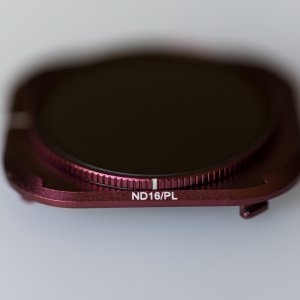
These new filters are a big step up from the original linear PL that was unable to be rotated. Due to the direction of the sun at a certain point in day, the level of polarisation would vary with a non-rotatable PL filter. With this new improved rotatable PL filter, we are now able to rotate the filter and adjust for maximum polarisation regardless of the time of day/sun position. The filter spins smoothly, and there are nice white markings on both the filter base and rotatable segment that provide us reference points for what polarisation we were using previously.
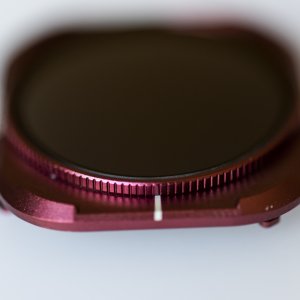
Fit:
I’ve tried both the ND and ND-PL filters on the M2P, and they are a perfect fit. The gimbal cover fits perfectly, with no resistance encountered previously.
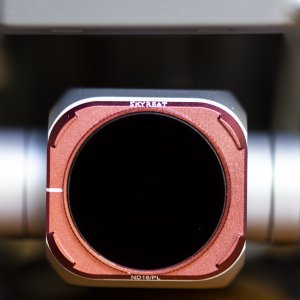
Side on view shows no protuberance to make installation of the gimbal cover difficult.
The fit is also very good, with virtually no play. I’m guessing there is less than a 0.25mm gap between the filter and camera housing. If it was flush on, then there would be scratching of the camera housing and filter, something that is not desirable.
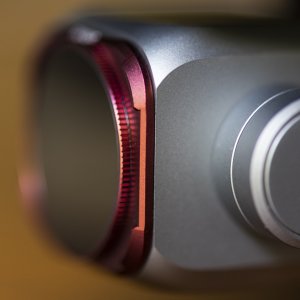
I noticed during installation of these new filters, that the motion was a lot more smooth, with less play and resistance. This led me to analyse the old and new filters a lot more closely to see if any other improvements had been implemented.

Comparing the old filter on the right and new on the left, the new filter has bigger writing, making recognition of the filter an easier exercise.
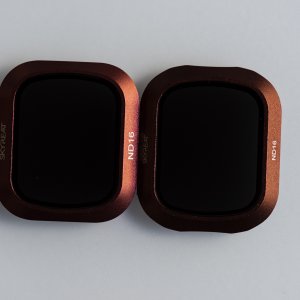
The left is the new filter, the right is the previous generation filter. It’s clear from this image, the new filter is shorter on the width axis by over 1mm, which has now allowed the gimbal cover to fit nicely over the gimbal with the filters attached.
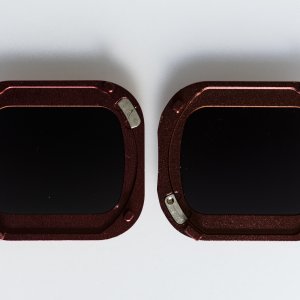
Left is new filter, right is previous generation filter. Looking at the differences, a few things start to become obvious.
1) The top right silver latch has no depression to fit the ball that is present on the lens enclosure. One would suspect this would reduce the hold strength of this filter, but I have not noticed such an occurrence. One reason this might have been implemented is to reduce the force needed to remove the filter during the initial twisting.
2) The 4 protuberances of metal that previously were rectangular to fit into the camera housing are a lot more round this time around. This would make twisting the filters in and out of the lens housing theoretically easier, and this is exactly what I’ve noticed with my samples. The twisting motion of the filter onto and off the lens assembly is much smoother.
More pictures showing the new rounded vs previously more rectangular metal latches

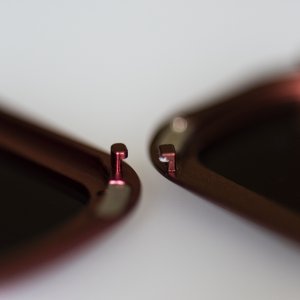
Conclusion:
It is very good to see Skyreat take on the suggestions others and myself have suggested to them previously, and even small changes such as the metal latches being more rounded being changed add to what is an excellent filter set.
I can only highly recommend this filter set. For the price, rotatable PL filter and now good fit of the gimbal cover onto the lens with the filter attached, it is an absolute steal. As shown previously, image degradation using the filters is almost undetectable, reflections are virtually non-existent.
The main differences are now:
1) The gimbal cover will now fit over the gimbal with filter attached without obstruction
2) The ND-PL filter is now rotatable. This allows for variable/adjustable polarisation, which we will get into later
External Box:

Relatively unchanged. A nice gloss with clear printing. Nothing fancy, but gets the job done
Internal Box:

It’s good to note that the QC seems to have been increased, and the filters are now fitted better into the box with the lens wipe.

On the left are the ND filters, and on the right are the ND-PL variable filters. Simple, well presented. The foam ensures that there is a nice secure fit of the filters into box. I prefer this over plastic box inserts which can scratch the filters on insertion and removal.
The ND-PL filters

These new filters are a big step up from the original linear PL that was unable to be rotated. Due to the direction of the sun at a certain point in day, the level of polarisation would vary with a non-rotatable PL filter. With this new improved rotatable PL filter, we are now able to rotate the filter and adjust for maximum polarisation regardless of the time of day/sun position. The filter spins smoothly, and there are nice white markings on both the filter base and rotatable segment that provide us reference points for what polarisation we were using previously.

Fit:
I’ve tried both the ND and ND-PL filters on the M2P, and they are a perfect fit. The gimbal cover fits perfectly, with no resistance encountered previously.

Side on view shows no protuberance to make installation of the gimbal cover difficult.
The fit is also very good, with virtually no play. I’m guessing there is less than a 0.25mm gap between the filter and camera housing. If it was flush on, then there would be scratching of the camera housing and filter, something that is not desirable.

I noticed during installation of these new filters, that the motion was a lot more smooth, with less play and resistance. This led me to analyse the old and new filters a lot more closely to see if any other improvements had been implemented.

Comparing the old filter on the right and new on the left, the new filter has bigger writing, making recognition of the filter an easier exercise.

The left is the new filter, the right is the previous generation filter. It’s clear from this image, the new filter is shorter on the width axis by over 1mm, which has now allowed the gimbal cover to fit nicely over the gimbal with the filters attached.

Left is new filter, right is previous generation filter. Looking at the differences, a few things start to become obvious.
1) The top right silver latch has no depression to fit the ball that is present on the lens enclosure. One would suspect this would reduce the hold strength of this filter, but I have not noticed such an occurrence. One reason this might have been implemented is to reduce the force needed to remove the filter during the initial twisting.
2) The 4 protuberances of metal that previously were rectangular to fit into the camera housing are a lot more round this time around. This would make twisting the filters in and out of the lens housing theoretically easier, and this is exactly what I’ve noticed with my samples. The twisting motion of the filter onto and off the lens assembly is much smoother.
More pictures showing the new rounded vs previously more rectangular metal latches


Conclusion:
It is very good to see Skyreat take on the suggestions others and myself have suggested to them previously, and even small changes such as the metal latches being more rounded being changed add to what is an excellent filter set.
I can only highly recommend this filter set. For the price, rotatable PL filter and now good fit of the gimbal cover onto the lens with the filter attached, it is an absolute steal. As shown previously, image degradation using the filters is almost undetectable, reflections are virtually non-existent.
Turn11
Well-Known Member
Very good review, good description of improvements and changes. Good pictures showing the changes.
The filter does not add any vignettingThe circular polarising filters are available in the UK here .
Keen to know if there is any noticeable vignetting when aperture is wide open though.
CanadaDrone
Well-Known Member
- Joined
- May 9, 2018
- Messages
- 2,176
- Reactions
- 2,065
I don't think Hasselblad... or many camera manufacturers make their own sensors, for what it's worth, some do, even then it's not across the board.
A LOT of cameras use Sony sensors.
Phase One for example.
Hasselblad as another.
The Nikon D850.
Pentax K-5 etc...etc....
The only company making their own sensors start to finish for their own cameras in the consumer/mainstream camera world is Sony. Most but not all cameras are using Sony sensors. Some sensors are largely 'off the shelf' (your typical P&S and probably the sensor in the M2P which is a variant of the Sony IMX183), others design their own sensors and have Sony manufacturer them (Nikon) and they do so knowing they will have access to Sony's proprietary manufacturing processes and patents.
The semiconductor/sensor industry is extremely small as the assembly lines cost up to the tens of billions of dollars. Even for companies with existing manufacturing capability, it's often far cheaper to farm out the work than to re-tool their assembly line to stay current with sensor technology. When Sony acquired Toshiba's sensor business, acquired Renesas' production lines, and did a patent share with Aptina, they effectively became the sensor manufacturer of nearly every camera out there.
As mentioned earlier, the only thing Hasselblad about the camera on the M2P is that label on the stock filter.
Similar threads
- Replies
- 3
- Views
- 603
- Replies
- 21
- Views
- 1K
DJI Drone Deals
New Threads
-
-
-
Avatar: Fire and Ash Drone Light Show.
- Started by The Droning Company
- Replies: 0
-
Globalstar and Skydio Trial Validates D2D for Drones.
- Started by The Droning Company
- Replies: 0
-



